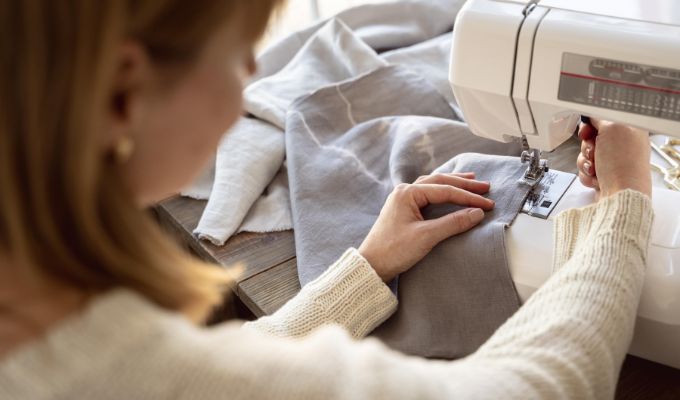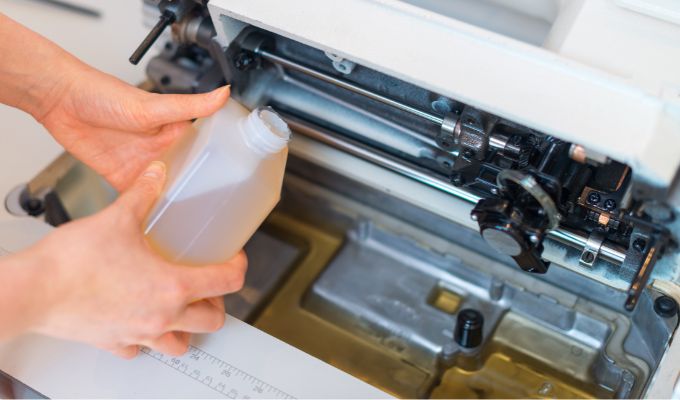There seems to be a growing interest in home sewing. Perhaps the cost of living increase in the UK has caused people to repair clothes, bedding, and other damaged textiles instead of throwing them away and buying expensive replacements.
By repairing clothes and other fabrics, you’ll not only save money on replacements – you’ll also reduce your household waste.
A home sewing machine is more than just a tool for hobbyists and seamstresses, they offer us a way to maintain all the fabrics in our home.
A computer-powered sewing machine can perform equally – or better – stitching compared to a mechanical manual machine. They provide reliable sewing performance but with some key advantages.
Let’s discuss.
How Computerised Sewing Machines Work
Put simply – computerised sewing machines automate.
The digital software included in computerised sewing machines is where the phrase “computerised” comes from. With the help of this computer software, you can choose from perfect machine embroidery designs, automatic stitch patterns, buttonhole stitch formats, automatic threading, and auto thread tensioning for optimal stitching results. This automation simplifies even the most challenging projects for a novice sewer.
Due to their pre-set features, computerised machines are a great alternative if you want a large range of stitch options, decorative stitches, and gorgeous machine embroidery.
Automatic features and an LCD panel that make viewing and adjusting settings a breeze make them ideal for professional workflow, and they also have the added benefit of a faster stitching speed.
Cost is the only real downside for this type of machine; the more power, features, stitches and patterns you want, the more expensive these computerised machines can get.
Electronic faults are also more difficult to diagnose, which makes equipment repair more difficult. Although the software doesn’t need updated, it’s possible that a fault could develop over time, which would require expensive specialist repair.
Do computerised sewing machines last?
A sewing machine can be an expensive upfront cost – particularly computerised modes, so you want to be sure that the machine you buy will last.
A reliable computerised sewing machine can last 10 years or longer, just like a regular sewing machine, and will end up paying for itself in the long run. Some cheaper computerised machines may last 5 – 10 years, and more expensive machines built by reputable manufacturers could last 10 – 20+ years without breaking down.
Of course, the lifespan of your sewing machine will be determined by how you treat, store, and maintain it. Most sewing machine manufacturers will have replacement parts should something become defective, and local sewing machine repair shops can handle fixes.
There should also be cleaning and maintenance advice in your sewing machine user manual. Be sure to follow any guidance on oiling moving components and cleaning, so that you can get many years of reliable use from your machine.
How to Make Your Sewing Machine Last Longer
Regular maintenance by a specialised dealer is best to ensure the longevity of your sewing machine. If your computerised sewing machine, despite proper care, is no longer sewing as well as it once did, maintenance may be the answer.
Maintaining Sewing Machine Reliability
Textile fibres, dust particles, lint, and dirt are deposited in the depths of your sewing machine when stitching. These deposits are unavoidable. Even if you clean and care for your sewing machine on a regular basis, some locations are tough to reach. To get to them, the sewing machine must be disassembled. Furthermore, the oil in your sewing machine’s mechanics deteriorates over time and must be replenished by a professional.
The frequency with which your sewing machine – of whichever type – requires maintenance is determined by its age, model, and sewing habits. An inspection every 3-5 years is sufficient for new models in normal operation. Older sewing machines, as well as those used on a daily basis, should be inspected every 2-3 years.
Dirt that accumulates over time can hinder functioning. Has your sewing machine become noticeably louder, or has it been inactive for an extended period of time? If you’ve seen any negative changes, they could be the earliest indicators of wear and tear. Maintenance can be really beneficial in this situation.
How is maintenance carried out?
Even the most robust and reliable sewing machine needs some kind of service to ensure a long life of trouble-free use. You can do some of the basics yourself by cleaning, replacing small worn parts, and lubricating mechanical parts, but you may be limited by your skill level. It’s our recommendation that you take your machine to a service and repair specialist for the best result.
After removing your sewing machine, the specialist will thoroughly clean it. After the dirt is cleaned, the mechanics are greased on the inside. After that, your sewing machine will be tested.
Thread tension, motor power, needle plate and needle bar, as well as sewing programmes and stitch patterns, are all investigated. Wearable or faulty parts will be replaced.



